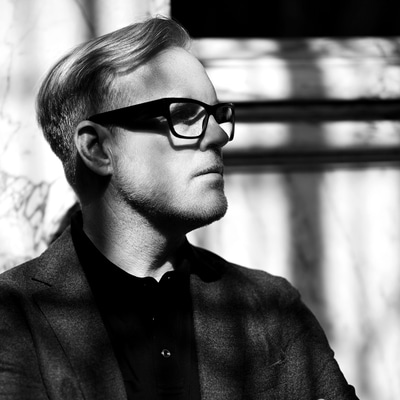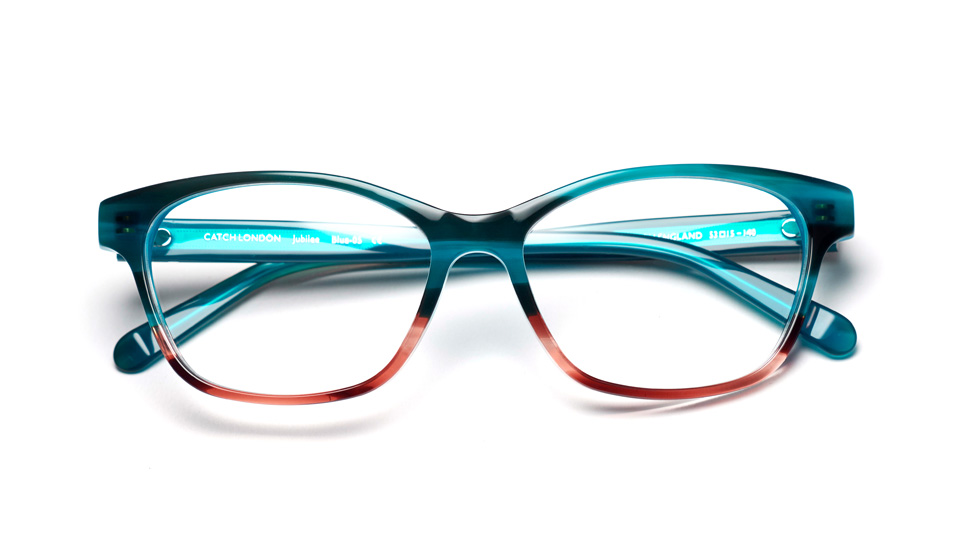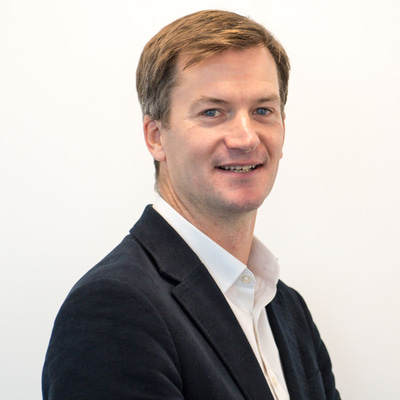- OT
- Industry
- Equipment and suppliers
- Drivers for change in industry in 2023
2023 in review
Drivers for change in industry in 2023
OT asked the analysts at Euromonitor International, and representatives from businesses across optics and eyewear, to identify some of the key consumer trends and developments that have shaped the market this year

21 December 2023
Another year packed with product launches and new technology, businesses opening, expanding, or closing their doors, and consumer behaviours shifting across demographics.
To reflect on the year, OT asked analysists at Euromonitor International, and business representatives across optics, to pick out some of the key developments that have shaped markets in 2023.
The budget-conscious consumer led the charge
For an overview of the year, OT asked Natasha Cazin, senior consultant – eyewear at Euromonitor International, to look back at the markets and consumer behaviours.
“In 2023 in the UK, we saw low digit growth in current value terms,” Cazin shared.
Values had already returned to pre-COVID-19 levels in 2022 as a result of the lifting of lockdowns and restrictions, she explained, adding: “In 2023, it’s been more of a difficult year. Challenges rose from the cost-of-living crisis and rising inflation. Consequently, this year the British consumer has been budgeting."
The sunglasses category performed the best, bolstered by a return of international tourists to the UK, which also provided a boost to sales in luxury markets.
Contact lenses, and daily disposables in particular, delivered strong growth, Cazin explained, adding that this was in-part due to consumers resuming their pre-pandemic routines.
In spectacle lenses, 2023 saw a trend towards re-glazing, while spectacle frames saw a slower growth as prices were “more contained, due to the lower average price per unit,” Cazin told OT.
In April, Cazin spoke to OT to outline Euromonitor’s Global Consumer Trends 2023, picking out three key types of consumers set to affect eyewear and optics:
- The ‘Budgeteers’ consumers were extra considerate of how they spent money due to economic uncertainties and rising costs
- The ‘Here and Now’ consumers, in contrast, were looking for a spark of excitement and willing to spend – though may have required different payment methods to support this
- The ‘Young and Disrupted’, the younger generations who are increasingly online, and driven by their beliefs.
Asked which of these consumer behaviours was particularly key during 2023, Cazin was certain: “The ‘Budgeteer’ stands out, because consumers were adapting their behaviour to contend with high inflation rates and the cost-of-living crisis. I think that trend was spot on.”
“As finances were one of the top concerns in their minds, consumers were researching new ways of buying items that offer more value, but still provide high quality,” she added.
This is seen in the desire from consumers to seek out products online, such as contact lenses.
Looking at these behaviours, Cazin advised: “Businesses should definitely consider being online. It doesn’t have to be through an e-commerce channel.
“Consumers, especially in the UK, love going into practices. They love the advice of the professionals, and they like to try things on. If companies have money to invest in virtual try-on tools, that is fantastic, but consumers would probably make the last purchase in store, so having an omni-channel approach is the best way forward,” she concluded.
Identifying key developments in the market, Cazin pointed out: “The integration of technology into eyewear was a growing trend in 2023. Smart glasses started to become more prominent.”
A new and updated collection of EssilorLuxottica and Meta Platforms’ Ray-Ban Meta smart glasses was released.
“In Euromonitor International, we don’t expect widespread adoption of smart eyewear to occur for another five, maybe 10 years. We don’t see people wearing smart glasses all the time, but companies are doing a fantastic job of making them look like a normal pair of glasses. I think we’ll get there, but there is still a way to go,” she explained.
Sustainability was also an important driver for change and innovation.
“Consumers are becoming increasingly more environmentally conscious and there has been a growing demand for products made from recycled or bio-based materials,” Cazin shared. “In addition to this, manufacturers have been adopting more sustainable practices to appeal to the eco conscious consumer.”
Keep an eye on the OT website as we approach the New Year for more from Natasha Cazin on what 2024 could bring.
Market dynamics, sustainability, clinical developments, and meeting patient needs

Tom Davies, CEO of House of Tom Davies, highlighted that many optometry practices globally are joining buying groups.
“This changes the way wholesale works, and on one side it has been a challenge for us, but over the year we have been joining the groups and, in the end, it turns into a big advantage,” he said. “We’ve managed to use it to grow in countries where we have historically struggled.”
Looking at technological developments, and how this might cause shifts within the sector, Davies said: “Changes are coming, but it has not happened yet.”
“There will be cheaper production, matched with AI, which will change eyewear. I think our industry will have changed dramatically by the end of the decade,” he observed.
“I think the big tech players will have an impact on eyewear. Amazon is already offering services in eyewear, which I think will become quite disruptive to independent opticians and brands like mine,” Davies told OT. “We will have to innovate and engage with technology, or we will get squeezed out.”

Highlighting key developments that have shaped the sector in 2023, Emily Mitchell, marketing manager for Heidelberg Engineering UK, pointed to the FDA approval of intravitreal pegcetacoplan (Syfovre) as the first treatment for geographic atrophy (GA) secondary to age-related macular degeneration (AMD).
Mitchell noted a host of treatments for wet AMD “that now required customised treatment plans for patients with wet AMD based on the stage of their disease and co-morbidities.”
In addition, she pointed to the introduction of artificial intelligence (AI) based software solutions that leverage routinely captured diagnostic images to monitor and detect retinal diseases.
In response to emerging ophthalmic diagnostic AI solutions, Heidelberg Engineering introduced Heidelberg AppWay, which Mitchell described as: “the first vendor neutral PACS offering a secure gateway to multiple artificial intelligence apps.”
Following the FDA approval of the new GA treatment, Mitchell said: “It is timely that Heidelberg Appway offers access to the first AI-based geographic atrophy analysis algorithm approved under the EU medical device regulation for clinical use.”
The GA Monitor, provided by RetInSight, analyses Spectralis optical coherence tomography (OCT) images to detect and monitor GA. Specially-trained AI-supported algorithms can then identify the degree and extent of the thinning of the photoreceptors, as well as the loss of the retinal pigment epithelium, which can help clinicians to identify patients on need of treatment, and track disease progression.
“Considering that two new therapies for the treatment of GA have already been approved in the USA and that therapeutic options are subsequently expected in Europe, patient numbers will increase significantly, requiring effective clinical management,” she commented.

Norris took on the leadership position in October, as outgoing CEO, Frances Rus, moved into a non-executive director role.
A “noticeable uptick” in demand for sustainable eyewear solutions has led to a shift towards eco-friendly materials and manufacturing processes.
Norris shared: “This sustainability-driven transformation, fuelled by growing environmental awareness among consumers, prompted Duncan and Todd Group to reassess and enhance its production methods.”
Early in 2023, Caledonian Optical relocated to a new 10,000 square foot manufacturing facility and has since implemented several initiatives to reduce its carbon footprint. These include investments in water-efficient equipment for surfacing and edging lenses, which has resulted in a 50% reduction in plastic waste sent to landfill.
“Moreover, advancements in lens technology have spurred demand for specific solutions like blue filter lenses and myopia management spectacle solutions,” Norris said. “Caledonian Optical has adeptly developed solutions, leveraging the latest lens designs to meet the rising demand in those areas.”
Optometrists find themselves busier than ever, monitoring eye health and eye disease, and providing a range of services and advice to support those with minor to major eye problems
Noting both the growing ageing population, and the increasing numbers of children being monitored and treated for myopia, Amanda Higginbotham, CCO of Birmingham Optical, told OT: “Optometrists find themselves busier than ever, monitoring eye health and eye disease, and providing a range of services and advice to support those with minor to major eye problems.”
“Many practices continue to introduce instruments with state-of-the-art technology, enabling the practitioner to understand and see changes sooner than ever before, but with this benefit comes increased appointments in monitoring change to ensure the patient is reviewed by the right person, at the right time,” she said.
Higginbotham identified that technology in the market is striving to provide a platform of data around an individual’s visual function and health. However, more devices require more space.
She added: “There has been further pressure on manufacturers to consider the footprint requirements and multi-functionality.”
One solution Higginbotham suggested, has been the TS-610 from Nidek, a short-form solution combining a phoropter, sight chart and other tests in one box that fits on a tabletop, but can also be provided with a console and software to be used in a pre-test area.
Advertisement
More 2023 in review
-
OT asks: The one change that shaped the way I practise in 2023...
-
Eyes on the prize: the challenges of 2023 and optimism approaching 2024
-
“We know that we can and should be contributing to a much wider understanding of healthcare”
-
“Optometry Wales will continue to support the profession through this time of continuous change”


Comments (0)
You must be logged in to join the discussion. Log in